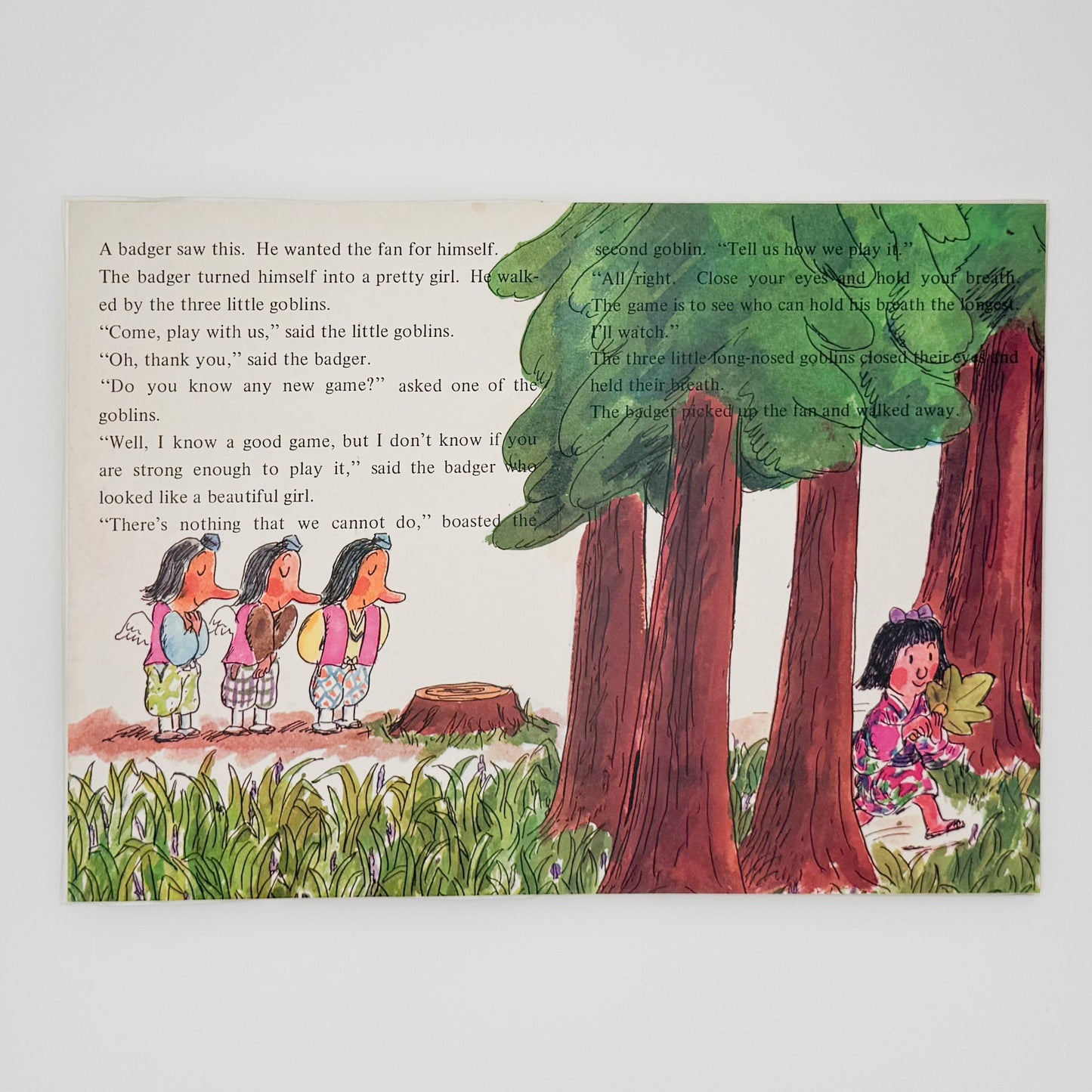Picture Book Angel Books, Complete 10-Book Set
Picture Book Angel Books, Complete 10-Book Set
Couldn't load pickup availability
Share
"Angel Books" is a 10-volume set of picture books and flexi discs published by Namco Corporation in 1968, intended as a three-dimensional audiovisual education series.
Doctors of education, Matsumoto Toru and Kubota Ikuo, have reconstructed Japanese folk tales such as Issun-boshi, Momotaro, The Tongue-Cut Sparrow, The Old Man Who Made Flowers Bloom, Urashima Taro, Bunbuku Tea Kettle, The White Rabbit of Inaba, The Magic Fan, The Tale of Tengu, and The Battle of the Monkey and the Crab from a new perspective.
The illustrations were created by popular illustrators of the time, such as Wada Makoto, Naga Shinta, Naruse Kuniharu, and Tada Hiroshi, and they portray the story in a modern style with rich ideas and colors.
Originally created as an educational picture book for children, the illustrations have become so appealing that adults can now enjoy the series as well.
[Title] Picture Book Angel Books
[Publisher] Namco Corporation
[Date of publication] 1968
[Number of pages] 14 pages each
[Size] Approx. 29.7 x 21.0 cm, outer dimensions approx. 29.8 x 22.0 x 8.7 cm, 3.70 kg
[Format] Hardcover
[Title Reading] Ehon: Angel Books
[Authors/Editors] Susumu Matsumoto (PhD, Columbia University), Ikuo Kubota (author), Makoto Wada, Kuniharu Naruse, Shinta Naga, Hiroshi Tada (illustrator)
[printing]
[ISBN]
[Condition] Used, average condition [4] (Box: Minor damage and stains, Main body: Clear cover slightly damaged and slightly shrunk, Main text: Minor stains on main text pages, flexi disc in average condition for its age)
[Accessories] Box, Japanese translation booklet, set of 10 flexi discs (attached to the back endpaper of each disc)
[Featured books]
[Related Exhibitions]
Makoto Wada (1936-2019)
Born in Osaka in 1936.
Graduated from the Design Department of Tokyo University of the Arts.
After working at the advertising agency Light Publicity, he became a freelancer.
He was active in a wide range of fields, including as an illustrator, graphic designer, book designer, film director, and essayist. He was responsible for the cover design of the magazine Hanashi no Tokushu for many years, and is also known as the director of films such as Mahjong Hyouryoku (1984).
He left behind a wide range of works, including picture books co-authored with Tanikawa Shuntaro and Hoshi Shinichi, as well as book covers and posters.
Passed away in 2019.
Kuniharu Naruse (1936-)
Born on January 1, 1936 in Osaka City.
In 1956, he studied fashion illustration under Akashi Masayoshi, a student of Nagasawa Setsu. Since then, he has been active in a wide range of fields, including television, radio, publishing, and public art, with his unique humor and warm style of writing.
He has received numerous awards, including the Osaka Prefectural Governor's Award in the Cultural Merit category (1986), the Kamigata Comedy Award Jury Special Award (1995), the Osaka City Citizens' Award in the Cultural Merit category (2007), and the Japan Cartoonists Association Award, Minister of Education, Culture, Sports, Science and Technology Award (2008). He has also worked on the original drawing for the Sanada Yukimura statue (Tamazukuri Sanko Shrine) and the design of the "Requiem Bell" bronze bell (Mount Osutaka Memorial Garden), and continues to be active as a symbol of Kansai culture.
Shinta Cho (1927-2005)
Born on September 24, 1927 in Haneda-cho, Ebara-gun, Tokyo Prefecture (later Ota-ku, Tokyo).
His real name is Suzuki Shuji.
He began his career as a manga artist, winning the Bungeishunju Manga Award for "The Talkative Omelette" in 1959. He then went on to create many masterpieces as a picture book author, including "Cabbage-kun" (1981 Nippon Picture Book Award) and "The Elephant's Omelette" (1984 Shogakukan Art Award).
His representative works include "Rubber Head Pontaro," "Gorogoronyan," "Tears of the Sawshark," "The Spider's Diary," "Where the Terrain Line Can Be Seen," "The Long, Long Slide," and "Munyamunya Snow Bus."
Known for his nonsensical, free-spirited ideas and humorous yet poetic sentiment, he was one of the authors who pioneered the art of picture books in Japan. In addition to picture books, he was also active in a wide range of fields, including manga, illustrations, book design, and essays. He passed away on June 25, 2005.
Hiroshi Tada
Born in Tokyo on March 17, 1937.
Graduated from the Department of Design at Musashino Art University. Picture book author and manga artist.
Known for his picture books that have the humor and rhythm typical of a cartoonist, he has published many works that have long been loved by young children, including the long-selling "Buu and Pyon Picture Book Series," as well as "The Same, the Same" and "The Mouse's Long Bread" (Kogumasha).
He has also written a variety of works, including "Becoming a Crocodile" and "Who is the Dog that Cries?" (Kogumasha), "The Apple Thuds" (Bunken Publishing), and "Is It Someone?" (Bunka Publishing Bureau), and his word play picture book "The Medaka's Glasses" has captivated adult readers as well.
He is a member of the Japan Cartoonists Association, Manga Shudan, and Manga Artists' Picture Book Association.
< Related Figures >














































